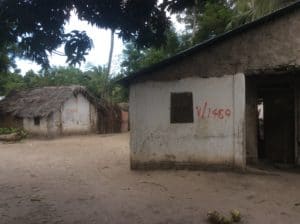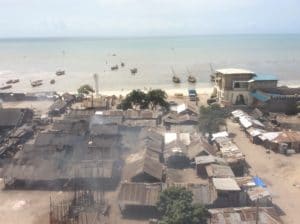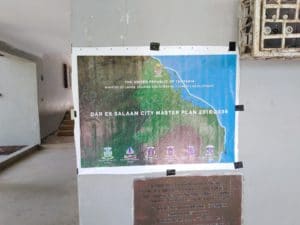Seth Schindler is Senior Lecturer in Urban Development and Transformation in the Global Development Institute. His research is focused on large-scale urban and regional transformation initiatives that integrate cities into transnational urban systems.
The original objective of this project was to research a mega-port development in Bagamoyo, an ordinary city in Tanzania. A company based in Hong Kong planned to build the port, which promised to be Africa’s largest and cost approximately $10 billion. The Chinese Ambassador to Tanzania exclaimed the project would transform Bagamoyo into a city of prosperity, yet as soon as they were announced plans started to go wrong. A series of delays culminated in the abandonment of the project when political outsider, John Magufuli, won the Tanzanian election in 2015. He scrutinized the financing of ongoing infrastructure projects and he was critical of the port’s cost and the terms of the deal with Chinese funders. The project was cancelled, then it was announced that it is indeed still going ahead but it will be delayed, and at this point it is worth noting the first lesson that I learned in the course of this research: don’t invest too much energy – and certainly don’t submit a grant proposal – researching an infrastructure project that hasn’t even started.
Preparations were made to compensate villagers who would be forced to relocate once the port construction was underway. Officials surveyed communities and numbered houses in red paint, indicating that they were earmarked for demolition and their owners would be compensated.

Figure 1. Houses near Bagamoyo earmarked for demolition. Author’s photo.
The announcement that it would be seized for the port and its owners would be compensated resulted in significant speculation, and accelerated ongoing urban expansion, which was driven partly by the arrival of residents from Dar es Salaam in search of affordable land. In recent years the city has consistently grown faster than the ability of authorities to expand piped water infrastructure or waste collection. MA students from the African Institute for Mathematical Sciences and I mapped the transforming and overlapping waste and water systems. Many households obtain water from multiple sources, and dispose of waste in a range of ways. While most residents are currently able to obtain water and dispose of waste, urgent action is needed for infrastructure and services to keep pace with demand. We concluded that instead of attempting to expand piped water to every household and collect waste from doorsteps, these systems should be configured at the neighbourhood scale. Water kiosks could distribute treated drinking water, while residents could be compelled to deposit their household waste in collection depots.

Figure 2. A view of Bagamoyo’s fish market and harbour. Author’s photo.
Bagamoyo was identified as a satellite city in the most recent master plan for Dar es Salaam. The port is simply one example of the Tanzanian Government’s attempt to enhance Bagamoyo’s connectivity. The city is also the site of an export processing zone and improvements to transportation infrastructure have reduced the travel time to Dar es Salaam. The second output from this research focused on top-down metropolitan planning in Dar es Salaam and compared it with similar processes in Manaus, Brazil.

Figure 3. Dar es Salaam’s new master plan. Author’s photo.
Dar es Salaam’s newly unveiled master plan and Tanzania’s current industrial policy identify Bagamoyo as a key node in an expanding metropolitan region and a nationwide network of integrated value chains. The territorialisation of these networks requires state-led development strategies, and the port project in Bagamoyo is but one example. While the port may never be built, the Tanzanian Government continues to pursue ambitious spatial planning strategies throughout the country. The re-emergence of state-led spatial planning in Tanzania is indicative of global trends. While international institutions prioritized deregulation, liberalization and the establishment of market-supportive institutions from the 1980s-2000s, the current imperative is to “get the territory right.” Policy geared toward the transformation of territory seeks to hardwire places like Bagamoyo into global value chains. In short, state-led spatial planning is the new laissez-faire. The resurrection of regional planning is a response to the persistent inability of many developing countries to integrate with global value chains and avoid ‘premature’ deindustrialization. Plans for Bagamoyo are representative of contemporary spatial planning – they are grand in ambition, many promises remain unfulfilled, yet they nevertheless have transformative impacts and result in unintended consequences.
Are you currently involved with regional research, policy, and development, and want to elaborate your ideas in a different medium? The Regional Studies Association is now accepting articles for their online blog. For more information, contact the Blog Editor at RSABlog@regionalstudies.org.